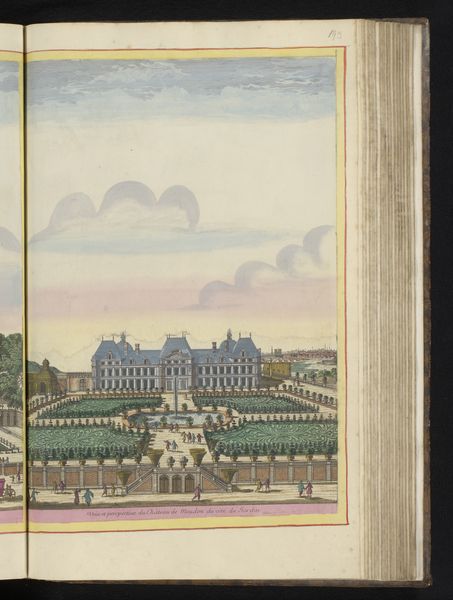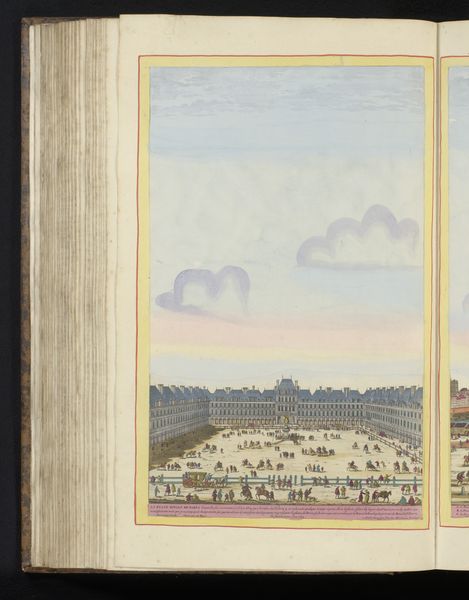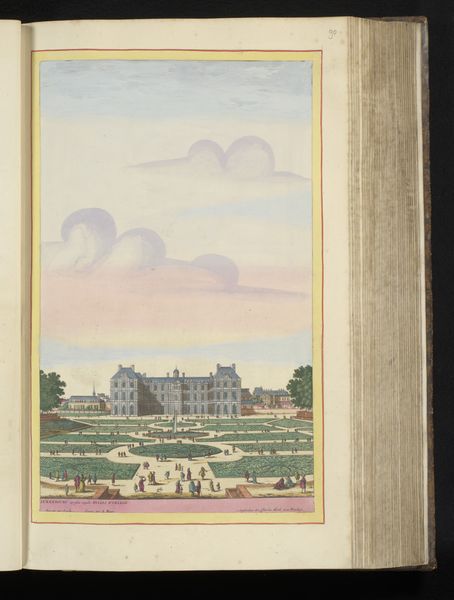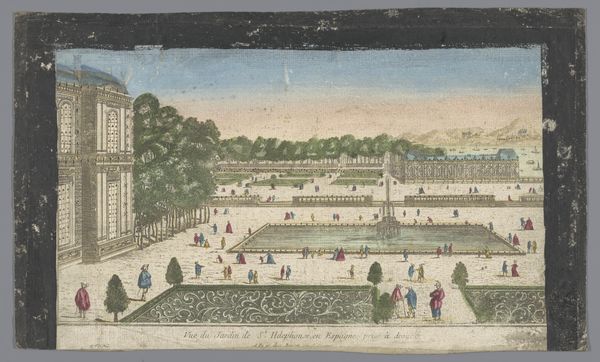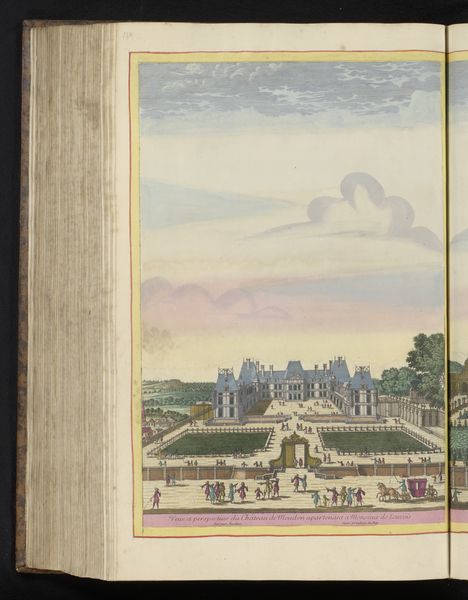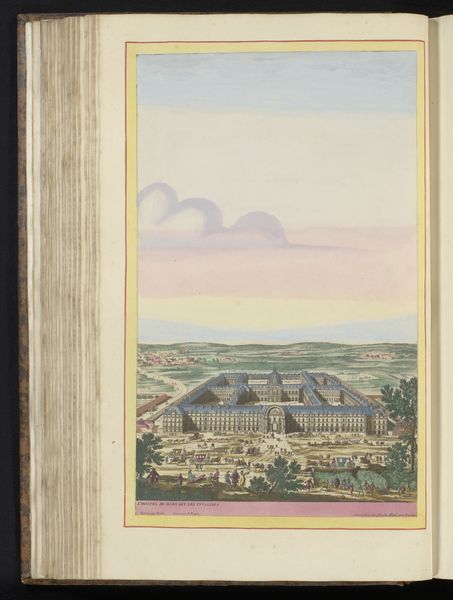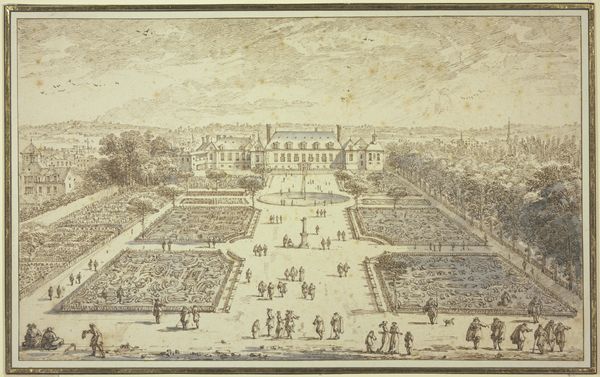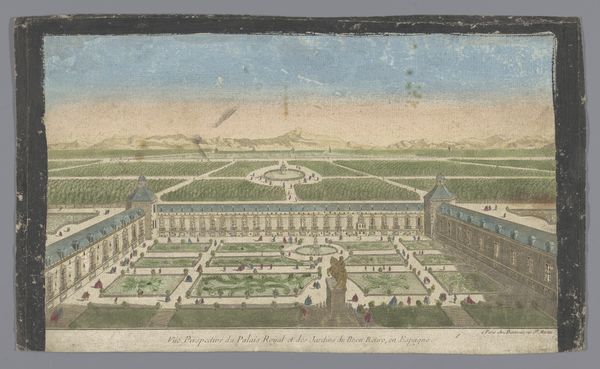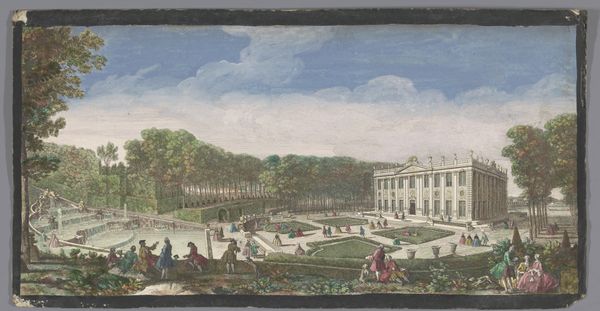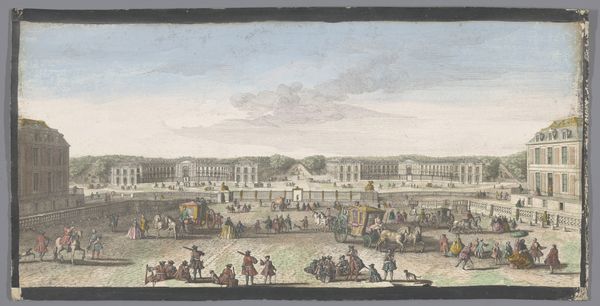
drawing, print, watercolor, pen, architecture
#
drawing
#
baroque
# print
#
landscape
#
watercolor
#
coloured pencil
#
pen
#
cityscape
#
watercolor
#
architecture
Dimensions: height 457 mm, width 310 mm, height 536 mm, width 331 mm
Copyright: Rijks Museum: Open Domain
This print, "View of the So-called Grotto at the Château de Meudon," was created by Pierre Aveline, likely in the early 18th century, using engraving techniques. Here, the artist deployed a combination of skill and physical labor. Aveline would have started by meticulously etching lines into a copper plate, a process demanding both precision and strength. Ink was then applied, and the plate pressed onto paper, transferring the image. Finally, the print would be hand-colored to bring the scene to life. The very act of printmaking was central to disseminating images during this period. As a medium, printmaking facilitated the circulation of knowledge, and fostered shared aesthetic values. It was a process that democratized images, making them accessible to a broader audience than unique paintings. This print invites us to consider the labor, skill, and broader cultural context embedded within its lines and colors. It challenges us to appreciate the artistry inherent in these 'everyday' images.
Comments
No comments
Be the first to comment and join the conversation on the ultimate creative platform.
